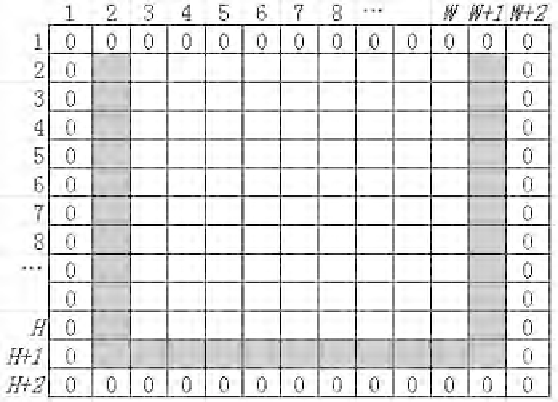Cryptography Reference
In-Depth Information
FIGURE 16.10
The "excursion" skill.
there are no pixels at positions (H+1, 0), (H+1, 1), and (H+1, 2) correspond-
ing to GI(x+1, y-1), GI(x+1, y), and GI(x+1, y+1). Thus, the neighboring
pixels that accepted error diffusion are shown in
Figure 16.12
for Case 2.
For Case 3, we take the pixel at position (1, W) for example. There are no
pixels at positions (1, W+1) and (2, W+1) corresponding to GI(x, y+1) and
GI(x+1, y+1). Thus, the neighboring pixels that accepted error diffusion are
shown in
Figure 16.13
for Case 3.
And last, for Case 4, the pixel GI(H, W) at position (H, W), there are
no pixels at positions (H, W+1), (H+1, W-1), (H+1, W), and (H+1, W+1)
corresponding to GI(x, y+1), GI(x+1, y-1), GI(x+1, y), and GI(x+1, y+1).
Thus, there are no neighboring pixels that accepted error diffusion for this
case.
We next describe how to use the Floyd and Steinberg error diffusion strat-
egy to transform a gray-scale image into a binary image. The detailed steps
are set forth as follows:
Input:
A gray-scale secret image GI sized H W.
Output:
A binary image HI sized H W.
Step 1:
Set a threshold TH = 127
Step 2:
for i=1 H, j=1:W








Search WWH ::

Custom Search